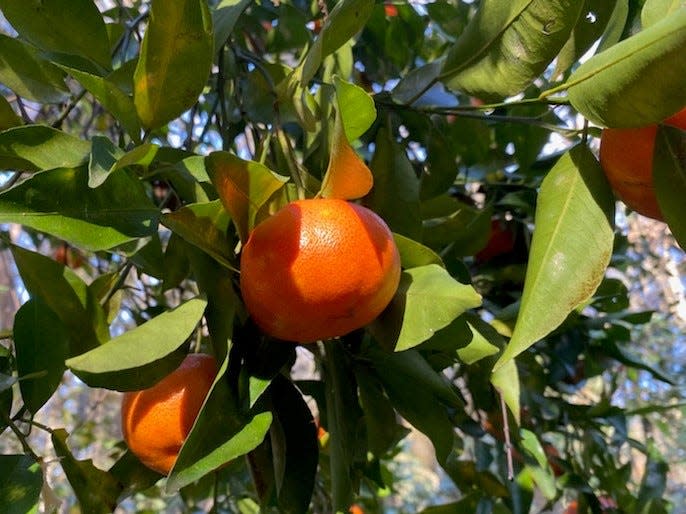Mark Bailey: Want fresh fruit all year?

Fruit-bearing trees and shrubs tend to produce one crop and then they are finished for the year. Why have one crop per year when you can have fruit coming into season year-round? With careful planning, it is entirely possible to have ripe fruit available throughout the entire year. The key elements necessary to achieve this require a grower or gardener to first select the right fruit-bearing plants. The next steps are where most mistakes happen. The plants must be planted in the right place based on their needs and allowed time to establish without stress. Each plant will have its own particular needs, so it is the responsibility of the grower or gardener to understand those needs. Regular irrigation is perhaps the most effective way to allow recently planted fruit trees and shrubs to become established and thrive.
Late fall and winter are the time of year when the least variety of plants are in season. Citrus dominate the cool season, and there are many varieties to choose from. Mandarins, kumquats and sweet oranges commonly ripen during the winter season. Citrus fruit can stay ripe on a tree for several weeks, which can extend the time fresh fruit is available. That said, citrus production comes with some caveats. Citrus is threatened by citrus greening disease, which has already destroyed many thousands of acres of citrus groves. Both the pathogen and the insects that spread the disease are well-established in Florida. Choose varieties that are the most tolerant to citrus greening disease. One such example is a mandarin hybrid called Sugar Belle. Citrus grown in partial shade have demonstrated greater tolerance to citrus greening compared to trees grown in full sun.
Throughout winter and springtime, most varieties of strawberries are in season and produce their crop over an extended period of time. Two extremely robust plants that are reliably productive and well-adapted to the climate in North Central Florida are loquats and mulberries. Loquats can tolerate more conditions than nearly any other plant in the region, and they remain evergreen throughout the year. A loquat tree, if anything is to be planted, is likely the most reliable — though slower-growing than mulberries. Mulberries come in a wide range of species and varieties, and grow best in full sun. They have extremely rapid growth and can produce fruit within the first year. Both loquats and mulberries produce excellent fruit.
Two additional plants that yield fruit in spring are southern highbush blueberries and peaches. Both have a lot of varieties to choose from, and early, mid- and late-season varieties are available at some nurseries. Both require chill hours, which is cool weather throughout the winter. Low chill-hour varieties should be planted for this region. Both southern highbush blueberries and peaches are fairly high-maintenance if high yields are to be expected.
Early summer fruits include rabbiteye blueberries and chickasaw plum. Chickasaw plum is native to Florida and has a very tart flavor. Rabbiteye blueberries are more robust than southern highbush varieties and require less attention to produce reliably. Mid- and late summer see a wide range of fruit coming into season. Some of these fruits include blackberries, feijoa (pineapple guava), fig jujube, muscadine grapes, passion fruit and pears.
In early and mid-fall, persimmons and chestnuts come into season. Persimmons are excellent choices both for the unique-flavored fruit and their adaptation to the region. Persimmons come in astringent and non-astringent varieties. For those who are unfamiliar with persimmons, it may be best to choose a non-astringent variety. They also can remain ripe on the tree for about a month, and they have a very long shelf life compared to other fruit. Chestnuts will take a long time to bear nuts, but they are worth the wait. Chestnut hybrids are available at some nurseries, and most of them tend to be resistant to chestnut blight.
Once in late fall, many citrus trees come back into season and remain in season into early winter.
The University of Florida has publications for nearly every one of the aforementioned fruits that contain useful and detailed information.
For more information, call the Marion County Extension office at 671-8400 or email ironhill@ufl.edu.
— Mark Bailey is the Sustainable Agriculture and Food Systems Extension Agent for UF/IFAS Extension Marion County. For more information, contact the Marion County office at 671-8400. The Extension Service is located at 2232 NE Jacksonville Road, Ocala, FL 34470.
This article originally appeared on The Gainesville Sun: Mark Bailey: Want fresh fruit all year?

